« Return to all search results
Title Search Results
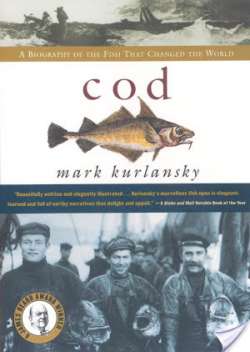
Wars have been fought over it, revolutions have been spurred by it, national diets have been based on it, economies have depended on it, and the settlement of North America was driven by it. Cod, it turns out, is the reason Europeans set sail across the Atlantic, and it is the only reason they could. What did the Vikings eat in icy Greenland and on the five expeditions to America recorded in the Icelandic sagas? Cod -- frozen and dried in the frosty air, then broken into pieces and eaten like hardtack. What was the staple of the medieval diet? Cod again, sold salted by the Basques, an enigmatic people with a mysterious, unlimited supply of cod. Cod is a charming tour of history with all its economic forces laid bare and a fish story embellished with great gastronomic detail. It is also a tragic tale of environmental failure, of depleted fishing stocks where once the cod's numbers were legendary. In this deceptively whimsical biography of a fish, Mark Kurlansky brings a thousand years of human civilization into captivating focus. From the Trade Paperback edition.
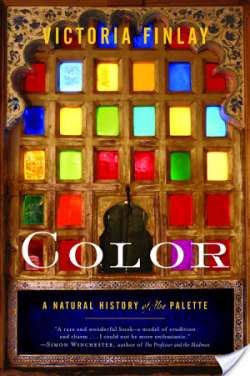
In this vivid and captivating journey through the colors of an artist’s palette, Victoria Finlay takes us on an enthralling adventure around the world and through the ages, illuminating how the colors we choose to value have determined the history of culture itself. How did the most precious color blue travel all the way from remote lapis mines in Afghanistan to Michelangelo’s brush? What is the connection between brown paint and ancient Egyptian mummies? Why did Robin Hood wear Lincoln green? In Color, Finlay explores the physical materials that color our world, such as precious minerals and insect blood, as well as the social and political meanings that color has carried through time. Roman emperors used to wear togas dyed with a purple color that was made from an odorous Lebanese shellfish–which probably meant their scent preceded them. In the eighteenth century, black dye was called logwood and grew along the Spanish Main. Some of the first indigo plantations were started in America, amazingly enough, by a seventeen-year-old girl named Eliza. And the popular van Gogh painting White Roses at Washington’s National Gallery had to be renamed after a researcher discovered that the flowers were originally done in a pink paint that had faded nearly a century ago. Color is full of extraordinary people, events, and anecdotes–painted all the more dazzling by Finlay’s engaging style. Embark upon a thrilling adventure with this intrepid journalist as she travels on a donkey along ancient silk trade routes; with the Phoenicians sailing the Mediterranean in search of a special purple shell that garners wealth, sustenance, and prestige; with modern Chilean farmers breeding and bleeding insects for their viscous red blood. The colors that craft our world have never looked so bright. From the Hardcover edition.
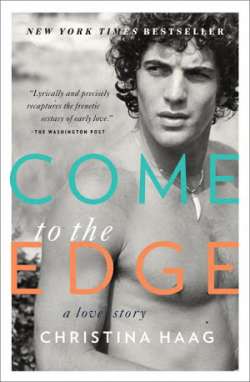
The Love Story of JFK Jr. and Christina Haag • New York Times bestseller When Christina Haag was growing up on Manhattan’s Upper East Side, John F. Kennedy, Jr., was just one of the boys in her circle of prep school friends, a skinny kid who lived with his mother and sister on Fifth Avenue and who happened to have a Secret Service detail following him discreetly at all times. A decade later, after they had both graduated from Brown University, Christina and John were cast in an off-Broadway play together. It was then that John confessed his long-standing crush on her, and they embarked on a five-year love affair. Glamorous and often in the public eye, but also passionate and deeply intimate, their relationship was transformative for both of them. Exquisitely written, Come to the Edge is an elegy to first love, a lost New York, and a young man with an enormous capacity for tenderness, and an adventurous spirit, who led his life with surprising and abundant grace.
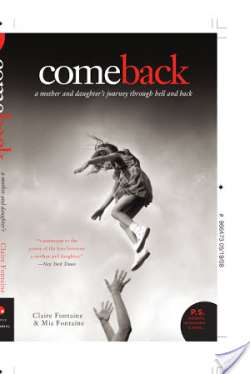
The unflinching true account of a teenage girl's descent into society's underbelly -- and her mother's desperate and ultimately successful attempts to bring her back. How does an honor student at one of Los Angeles's finest prep schools -- a bright, beautiful girl from a loving home -- trade school uniforms and afternoons at the beach for shooting up in the back of a van in rural Indiana? How does her devoted mother emerge from the shock of finding that her daughter has not only disappeared but had been living a secret life for more than a year? Mother and daughter tell their parallel stories in mesmerizing first-person accounts. Claire Fontaine's story is a parent's worst nightmare, a cautionary tale chronicling her daughter Mia's drug-fueled manipulation of everyone around her as she sought refuge in the seedy underworld of criminals and heroin addicts, the painful childhood secrets that led up to it, and the healing that followed. Her search for Mia was brutal for both mother and daughter, a dizzying series of dead ends, incredible coincidences and, at times, miracles. Ultimately, Mia was forced into harsh-but-loving boot camp schools on two continents while Claire entered a painful but life-changing program of her own. Mia's story includes the jarring culture shock of the extreme and controversial behavior modification school she was in for nearly two years, which helped her overcome depression and self-hatred to emerge a powerful young woman with self-esteem and courage. An unforgettable story of love and transformation, Come Back is a heart-wrenching and humorous portrayal of the primal bond between mother and daughter that will resonate with women everywhere.
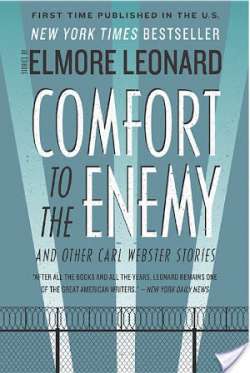
“An excellent read….Concrete evidence of a master crime writer still at the top of his game.” —Russel D. McLean, author of The Good Son “The reigning King Daddy of crime writers” (Seattle Times), Elmore Leonard first introduced quick-triggered legendary lawman Carl Webster in the New York Times bestseller, The Hot Kid, and brought him back for an encore Up in Honey’s Room. In Comfort to the Enemy and Other Carl Webster Stories, the loose cannon U.S. marshal struts his stuff once more in three electrifying new tales. Comfort to the Enemy is more indisputable proof that Elmore Leonard is indeed, as Dennis Lehane (Mystic River, Shutter Island) puts it, “The greatest crime writer who ever lived.”
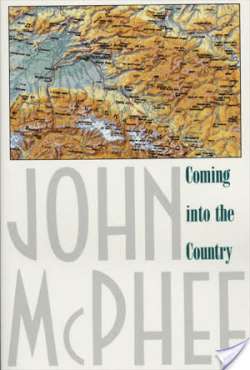
Coming into the Country is an unforgettable account of Alaska and Alaskans. It is a rich tapestry of vivid characters, observed landscapes, and descriptive narrative, in three principal segments that deal, respectively, with a total wilderness, with urban Alaska, and with life in the remoteness of the bush. Readers of McPhee's earlier books will not be unprepared for his surprising shifts of scene and ordering of events, brilliantly combined into an organic whole. In the course of this volume we are made acquainted with the lore and techniques of placer mining, the habits and legends of the barren-ground grizzly, the outlook of a young Athapaskan chief, and tales of the fortitude of settlers—ordinary people compelled by extraordinary dreams. Coming into the Country unites a vast region of America with one of America's notable literary craftsmen, singularly qualified to do justice to the scale and grandeur of the design.
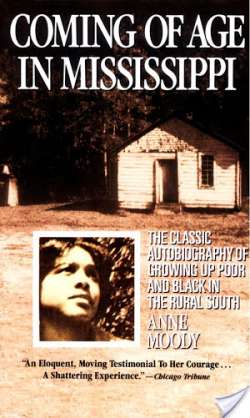
Written without a trace of sentimentality or apology, this is an unforgettable personal story—the truth as a remarkable young woman named Anne Moody lived it. To read her book is to know what it is to have grown up black in Mississippi in the forties an fifties—and to have survived with pride and courage intact. In this now classic autobiography, she details the sights, smells, and suffering of growing up in a racist society and candidily reveals the soul of a black girl who had the courage to challenge it. The result is a touchstone work: an accurate, authoritative portrait of black family life in the rural South and a moving account of a woman's indomitable heart.

Presents a minute-by-minute account of an H-bomb accident that nearly caused a nuclear disaster, examining other near misses and America's growing susceptibility to a catastrophic event.
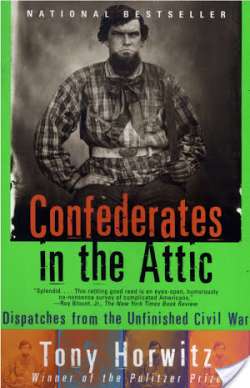
National Bestseller For all who remain intrigued by the legacy of the Civil War -- reenactors, battlefield visitors, Confederate descendants and other Southerners, history fans, students of current racial conflicts, and more -- this ten-state adventure is part travelogue, part social commentary and always good-humored. “Splendid.” –Roy Blount, Jr., The New York Times Book Review When prize-winning war correspondent Tony Horwitz leaves the battlefields of Bosnia and the Middle East for a peaceful corner of the Blue Ridge Mountains, he thinks he's put war zones behind him. But awakened one morning by the crackle of musket fire, Horwitz starts filing front-line dispatches again this time from a war close to home, and to his own heart. Propelled by his boyhood passion for the Civil War, Horwitz embarks on a search for places and people still held in thrall by America's greatest conflict. The result is an adventure into the soul of the unvanquished South, where the ghosts of the Lost Cause are resurrected through ritual and remembrance. In Virginia, Horwitz joins a band of 'hardcore' reenactors who crash-diet to achieve the hollow-eyed look of starved Confederates; in Kentucky, he witnesses Klan rallies and calls for race war sparked by the killing of a white man who brandishes a rebel flag; at Andersonville, he finds that the prison's commander, executed as a war criminal, is now exalted as a martyr and hero; and in the book's climax, Horwitz takes a marathon trek from Antietam to Gettysburg to Appomattox in the company of Robert Lee Hodge, an eccentric pilgrim who dubs their odyssey the 'Civil Wargasm.' Written with Horwitz's signature blend of humor, history, and hard-nosed journalism, Confederates in the Attic brings alive old battlefields and new ones 'classrooms, courts, country bars' where the past and the present collide, often in explosive ways. Poignant and picaresque, haunting and hilarious, it speaks to anyone who has ever felt drawn to the mythic South and to the dark romance of the Civil War.

The author humorously recounts her life growing up in the South, and comments on southern men, women, and traditions
